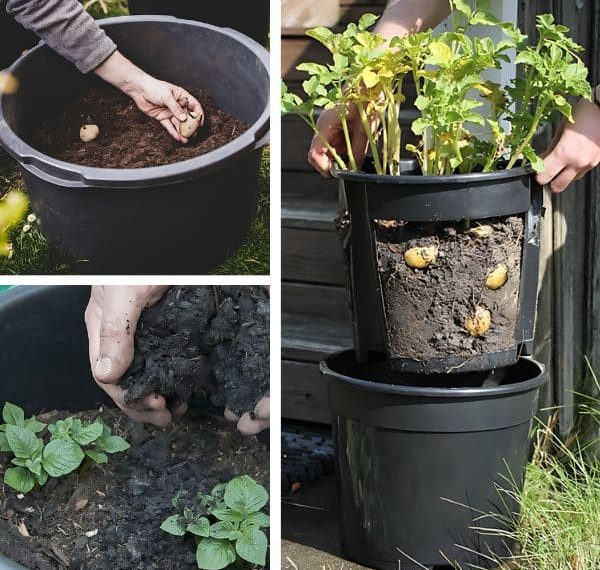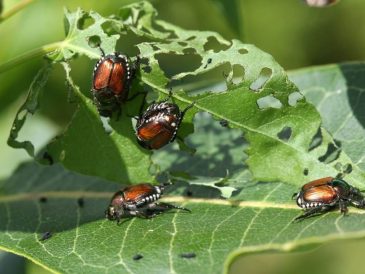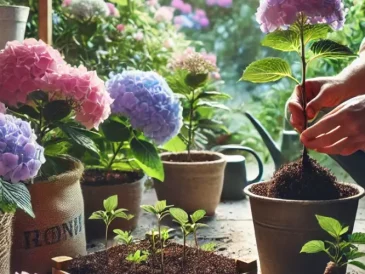Container gardening offers a practical solution for those with limited space, especially in urban settings.
Using containers allows you to control soil quality, moisture levels, and sunlight exposure, optimizing potato cultivation.
This method simplifies pest and disease monitoring, reducing the risk of crop damage. Growing potatoes in containers is accessible for gardeners of all skill levels.
Summary:
- Container gardening is ideal for limited spaces, allowing precise control over soil, moisture, and sunlight.
- You should use well-draining soil mixed with compost and fertilizer and plant seed potatoes with eyes facing up.
- You should provide consistent watering, adequate sunlight, and periodic hilling as well as manage pests and diseases.
| Botanical Name | Solanum tuberosum |
| Common name | Potato |
| Family | Solanaceae (Nightshade Family) |
| Plant Type | Perennial (often grown as an annual) |
| Height | 1 to 3 feet |
| Sunlight | Full Sun |
| Soil | Well-drained, sandy or loamy soil; pH 5.0 to 6.0 |
| Flower Color | White, pink, purple, blue |
| Flowering Season | Late spring to early summer |
| Native Area | Andes Mountains in South America |
Preparation
Seed Potatoes
Here are some varieties of seed potatoes that thrive in container environments:
- Yukon Gold: Medium-sized potatoes with a creamy texture and buttery flavor.
- Red Pontiac: Red-skinned potatoes boasting smooth white flesh.
- Fingerling: Small, finger-shaped potatoes with colorful skins and firm flesh.
- Russet: Large, brown-skinned potatoes with starchy white flesh.
- Adirondack Blue: Distinctive blue-skinned and blue-fleshed potatoes.
Firstly, you should cut seed potatoes into pieces, making sure each piece has at least two eyes or growth nodes as they are essential for shoot emergence and robust growth after planting.
Also, let the cut pieces air dry for several days to form a protective callus, which helps prevent rot and disease.
Potting Mix
I suggest using high-quality, fast-draining soil.
You should mix commercial potting soil with compost in a 1:1 ratio to provide essential nutrients and avoid using garden soil to prevent contamination from pathogens.
Next, add an organic, slow-release fertilizer with a balanced ratio, like 10-10-10 or 5-5-5 to support healthy growth.
Container
I recommend choosing a container with ample drainage holes, made from food-safe materials. Containers between 2 and 3 feet deep will accommodate the roots adequately.
The size of your container impacts your yield. Small containers (5 gallons) can produce around 15-30 potatoes, while large containers (10+ gallons) can yield 70-100 potatoes.
Fabric potato grow bags are versatile and provide excellent drainage, while plastic buckets and bins work well if they have drainage holes.
I suggest avoiding containers made from materials like old tires due to potential chemical contamination. Instead, try using wooden half-barrels, plastic storage tubs, burlap sacks, or canvas tote bags.
Growing Potatoes In A Container
When growing potatoes in a container, you should fill the container with 4 to 6 inches of potting soil mixed with compost and fertilizer, leaving room at the top for hilling later.
Next, space the potato pieces 10 inches apart with their eyes facing up, then covering them with 3 to 4 inches of potting mix.
Make sure you maintain consistent watering to keep the soil evenly moist throughout the growing season.
Care for Potatoes In A Container
Here are main requirements for taking care of potatoes in a container:
- Ensure your container receives at least eight hours of full sun daily.
- Use potting soil blended with compost and fertilizer to ensure proper drainage and nutrients.
- Space seed potatoes about 10 inches apart and leave 4 inches of space from the sides.
- Provide about 1 to 2 inches of water per week.
- Add soil around them every 2 to 3 weeks to encourage tuber formation and prevent greening.
Light
Potatoes thrive with at least 8 hours of full sun each day. You need this sunlight to promote photosynthesis, prevent leggy growth, and ensure healthy foliage and tuber development.
If you grow potatoes in partial shade, you might notice the plants becoming leggy and producing smaller yields.
Soil
You should use well-draining soil mixed with compost and fertilizer.
Potatoes thrive in slightly acidic conditions, so ensure the soil pH falls between 5.0 and 6.0. This pH level promotes nutrient uptake and supports healthy growth.
Water
Potatoes need around 1 to 2 inches of water each week. I recommend watering them in the morning to keep the soil consistently moist without becoming soggy.
You should check soil moisture by sticking your finger into the soil. If the top 1 to 2 inches feel dry, it’s time to water.
Temperature and Humidity
Container-grown potatoes thrive best in temperatures between 60-70°F (15-21°C) and are suitable for zones 3-9.
You should aim for moderate humidity levels to keep your plants healthy and avoid extreme humidity, which can lead to fungal diseases and negatively impact plant health.
Hilling
When your potato plants reach about 6 inches tall, you should gently mound soil around the base of the stems.
I recommend covering about one-third of the plant, including the lower leaves, to start the hilling process.
This process should be repeated periodically as the plants grow. You can stop when the soil reaches the top of the container.
Fertilizer
You can incorporate organic, slow-release fertilizer into the potting mix to support healthy growth without the risk of burning the plants.
Additionally, you should use a diluted liquid fertilizer, such as fish emulsion, every couple of weeks as your potatoes mature.





